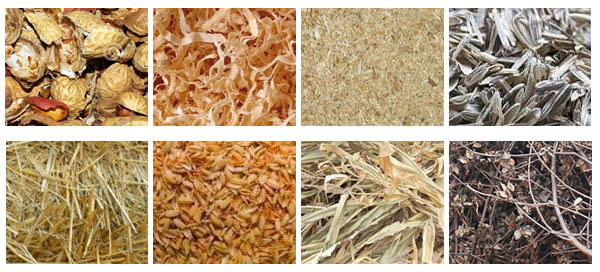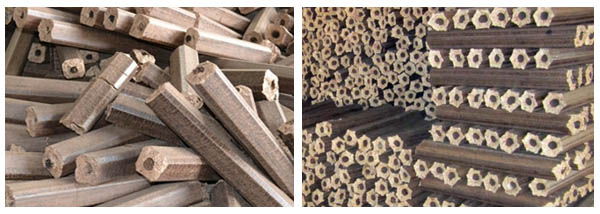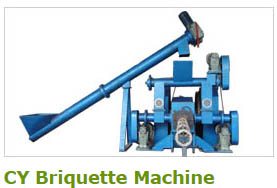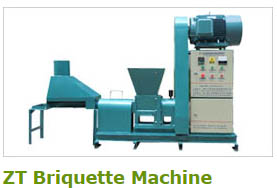Raw materials for biomass briquette
Raw material of Biomass briquette
Human use energy has a long history. In 19
th century, coal is most important energy. As the development of industrial, people begin to realize the disadvantages of coal fuel. It has big pollution to the air and the resources are less and less. Under this condition, people begin to found new energy to replace of the fossil fuel. On the one hand, it is a method to protect the air. On the other side, it saves a lot of money for the cost for energy. Because the raw material for
biomass briquette is renewable, Biomass briquette, boasted with the evident features of clean and renewable has been approve by people all over the world.

Today, we take a close look at the raw material for biomass briquette. Briquetting is a kind of technology which has been development along with the development of biomass energy. Actually, the raw material for briquetting is inexhaustible. Each time of harvest, boundless of crops straw has been left in the field. So the raw material for biomass briquette is not a big issue. But one thing should be pay attention to is the collective of raw material. The process need time, energy and machinery help. Also, the crop straw has no value for the farmer harvest. Therefore, the aim of commercial production of biomass briquette is to make money. At this condition, the raw material is not free. It is difficult to fond examples of operating biomass briquette plants which do not have to pay something for the residues they use. Such payments many arise because there are competing uses for the waste but it may also arise simply because a residue provider is unwilling to allow someone else to make profit form their wastes without asking for a share in the form of payment for the raw material.
Generally speaking, there are two kinds of raw materials for biomass briquette. One is field resides and the other is the process waste. Most residues are fry at the moment of harvesting and therefore a high potential raw material for biomass briquette. The volume of residues produced per unit of cultivation is within a wide range, depending strongly on the crop, the intensity of agriculture and climate. In general, field residues are bulky, baled wheat straw has been put at around 100 kg/m3 and stacked cotton residues at 55 kg/m3. Even when chipped, cotton residues only have a bulk density of 130 kg/m3. By contrast, stacked wood has a bulk density above 500 kg/m3. This means that the transport of residues to a briquetting plant can become increasingly expensive as the distance from the site of the residues to the plant increases. In addition, most field residues appear only for a given period in the year requiring seasonal transport capacities (tractors, trailers etc.) and storage capacities. Coming back to the above mentioned example calculation: there would be the need to transport almost 440 tons of raw material in few days and, assuming baled straw wheat, a storage room of 4400 m3, which could be a building with an outline of 30 x 30 meters and 5 meters of height.

Another category is the processing wastes. all residues obtained from the processing of a crop or wood are included, for example: coffee husks, groundnut shells, rice husks, coir dust, sawdust, furniture waste etc. In principle, the briquetting process works quite well for a wide range of feedstock provided they are homogeneous and contain moisture below 15 %.
In general, the evaluation of a plant based upon process residues is less complex than for one based on field wastes. The main problem is to establish the quantitative availability of material from a limited number of point sources, possibly only one. This is inherently simpler than to establish the potential residue yields from shifting agricultural patterns of several outside farms. In effect, the transport costs of gathering, which can be the main barrier to utilization of crop residues, have been absorbed by the transport of the valuable food-component of the crop.
At the other extreme, a briquette tied to a particular process residue from a single plant may find itself stranded if the supply of residues fails to meet expectations as the plant itself fails to find any raw material. Changes in agricultural practices or simple miscalculation can lead to that the feed-plants simply cannot deliver enough residues. The small value of the briquettes relative to the total value of the crop means that the issue of providing briquettes raw-material was irrelevant to the wider agricultural changes going on.
-------------------------------------------------------------------------------
Biomass densification is the bonding together of waste biomass product, such as wood chips or sawdust, peanut husk, rice husk, sunflower seed husks, bagasse (sugar cane or sugar beet residue), coffee shells, coconut husks, etc.





